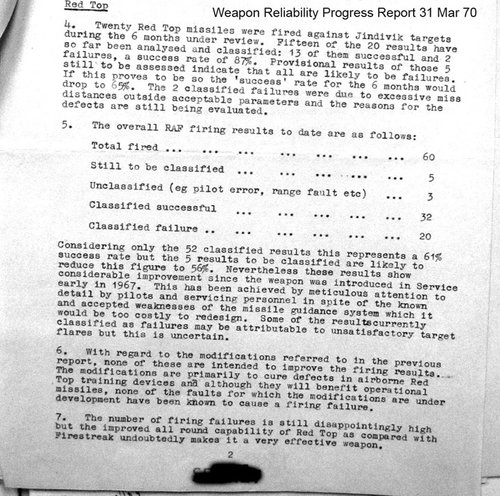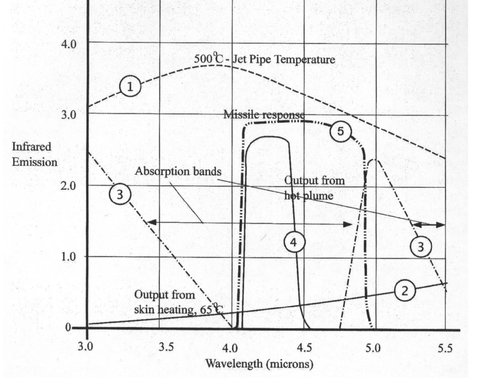Scrap all British AAMs in favour of licensing Sidewinder and Sparrow.
I think this is a bit on the harsh side, because I think you NEED local development expertise in order to be able to improve upon the basic model. That seeker research isn't going to write itself.
The big deficiency in British AAM development is their complete failure to ever produce a completely indigenous SARH AAM. Everything I've ever read of Red Dean, either from BSP or John Forbat, mentions the possibility of SARH control, but this is never elaborated.
The real problem, of course, is that until the adoption of the Phantom there was NO BRITISH FIGHTER EVER with a radar that had the innate capability to perform SARH illumination. And without that, Sparrow has no value unless you either bite the bullet and adapt/redesign AI.18 (is it even possible to add an illuminator to AI.23?) or replace it with an American SARH-missile-capable unit (and associated fire-control system).
The Crusader's radar dish MIGHT fit in the Lightning's centrebody, but even if it does, where are you going to package everything behind it plus the FCS and missile-interface gear? Is the drop-out package for the Firestreaks big enough?
The big problem for the British with AAM development was never the fighters or the missiles, IMO; it was the radar/FCS interface between the two. And that resulted from the insistence on fire-and-forget, which meant there was never any impetus to integrate SARH illumination into British AI sets from the beginning; the only thing they were ever going to be asked to do was to point a seeker head in the right direction for on-rack acquisition prior to firing.
IIRC Red Hebe was going to be SARH, but whatever might have happened in regard to producing an illuminator for it went out the window when the 1957 generation of interceptors was killed. Meanwhile, neither Firestreak nor Red Top ever went to the same school of hard knocks that Falcon, Sparrow and Sidewinder attended, so we will never know how well they would actually have performed in service.
As far as ship-launched SAMs are concerned, I think a case could be made for buying Terrier and/or Tartar. That system (and its Standard successor) has had a VERY long and fruitful development history, with a great deal of stretch. The other possibility would have been collaboration with the French, but I read online recently that even later versions of Masurca owe a lot to transferred US work on Terrier (with which it shared a common general layout from the start).
I looked at relative dimensions, recently - a double-ended US missile cruiser like the Leahy is actually not that much bigger than a WW2 Leander in OAL terms, and while I'm not suggesting for a minute that you can take a Leander-class hull, gut it and rebuild it into a double-ended CG, I think it shows what could have been. I need to re-read Friedman's post-war cruiser book and also grab a copy of "The Postwar Naval Revolution" if it's not too pricey - I'm pretty sure Terrier and/or Tartar options were seriously considered there.


